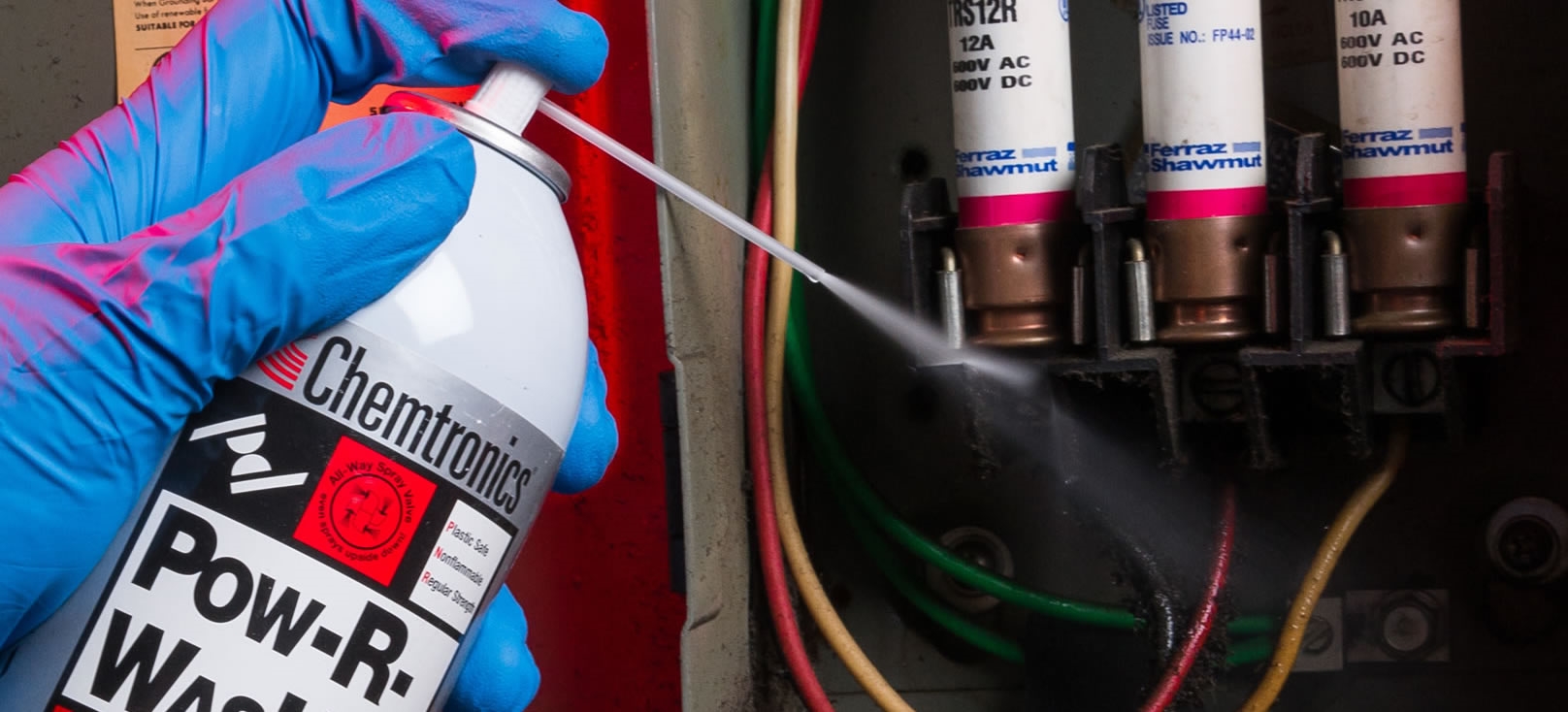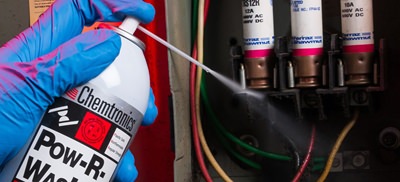We recommend choosing a solvent engineered specifically for contact cleaning. Other solvent cleaners an be used, but be aware or the following factors:
- Spray force - Aerosol cleaners are generally used to penetrate into the tight areas around the contact and provide agitation.
- Dielectric strength - If you are cleaning energized (powered) equipment, use a cleaning solvent with a dielectric strength of 30 kV (30,000V) or higher. This prevents shorting the equipment. Dielectric strength is defined as the maximum electric field that the material can withstand under ideal conditions without breaking down. Breaking down in this sense is described as a failure of insulating properties, where the electricity breaks free of the conductors and burns a path through the weakest area of the insulating materials.
- Solvency / cleaning strength - The solvent cleaner needs to be strong enough to dissolve oil and other contamination.
- Flammability - If there is risk of flames or sparks, a nonflammable solvent is recommended.
- Evaporation rate - Since there isn't opportunity to wipe the solvent off the inner parts of the electrical device, fast evaporation is very helpful.
- Plastic compatibility - Electrical devices often contain plastics and gasketing material that can be damaged by harsh solvents.
- Additives - Some cleaners, like WD40, contain oils that are left behind. That can be a good way to prevent oxidation, but it depends on your application and equipment. In some cases, it could be considered a contamination -- especially silicone oil, which tends to migrate.
Check out "Ultimate Guide to Contact Cleaners".
Ask A Technical Question
Stay up-to-date on Chemtronics news, products, videos & more.



